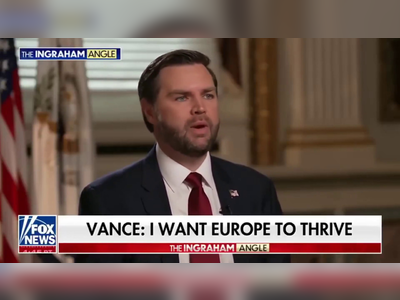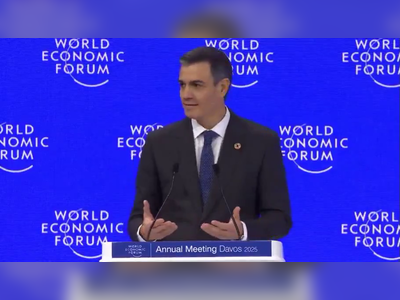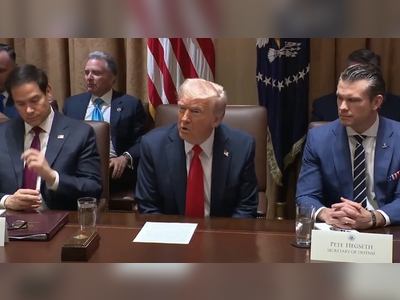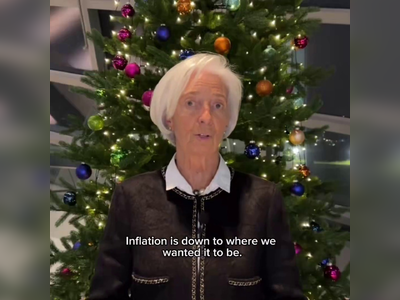
Economic Crossroads: Hungary's Recovery Amid Trump's Global Trade Challenges
Hungary's internal economic resurgence faces external threats from global protectionism and impending U.S. policies under Donald Trump.
The latest economic data from Hungary has showcased a promising trend in domestic demand recovery, signifying a potential revival in the country's economic landscape.
However, this budding resilience faces significant external pressures that hinge largely on Germany's economic performance and broader global dynamics, including potential policy shifts from the United States under Donald Trump's leadership.
This juxtaposition of domestic optimism against international uncertainty comes at a time when Hungarian Prime Minister Viktor Orbán has expressed his anticipation of a thriving economic year, a prognosis largely contingent on overcoming challenges posed by Trump’s protectionist inclinations and other global economic risks.
Parallel to these developments, insiders have reported that advisors in the Trump administration are crafting tariff proposals targeting critical imports, which could impact numerous trade partners.
Such measures are championed by Trump and his allies as bolstering domestic manufacturing, yet they also risk significant disruptions to global trade flows.
For a nation like Hungary, whose economy is heavily enmeshed with European partners, particularly through its reliance on the German automotive industry, these developments warrant a cautious outlook.
Data from recent months underscore the European Union's critical role, with 76% of Hungary's exports and 72% of imports involving EU member states as of November.
Experts have long warned that a shift towards protectionism could reverse decades of globalization-driven growth, characterized by low inflation and widespread market access.
Sebestyén Géza, a scholar at Budapest’s Corvinus University, elaborates that such trends could usher in elevated inflation and a drop in economic productivity—a reality Europe has begun experiencing amid rising energy costs and other competitive pressures.
The Hungarian government, through strategic engagement with the U.S., seeks to mitigate these risks, exploring what Sebestyén calls the potential 'Trump card.' Reports indicate an eagerness for rekindled U.S.-Hungarian relations following a perceived political thaw from hostilities under previous American administrations.
Pragmatic opportunities in this bilateral dynamic might include renewed agreements on dual taxation and prospective partnerships in technology sectors.
Notably, recent high-profile meetings between Orbán, Trump, and business leaders in Florida underscore the urgency and potential for deeper economic collaboration.
Concurrent NASA and telecom projects, such as Hungary’s 4iG HUSAT 1 satellite initiative, stand out as prospective fields for increased U.S. engagement.
The program represents a landmark private endeavor in Central Eastern Europe to enhance satellite capabilities, reflecting the innovation and ambitions driving this bilateral economic push.
Despite these layered international dynamics, internal factors provide a glimmer of hope for Hungary's economic outlook.
Remarkable growth in retail volumes—a testament to strong employment figures and modest wage growth—mirrors a broader narrative of internal resilience.
However, the specter of broader European economic stagnation, coupled with high energy prices and bureaucratic hurdles, exacerbates the challenges faced by Hungary’s export-reliant economy.
In conclusion, while Hungary's internal economic indicators suggest a positive trajectory, its future prosperity heavily relies on resolving external uncertainties and strengthening cross-continental collaborations, particularly with strategic partners like the United States.
However, this budding resilience faces significant external pressures that hinge largely on Germany's economic performance and broader global dynamics, including potential policy shifts from the United States under Donald Trump's leadership.
This juxtaposition of domestic optimism against international uncertainty comes at a time when Hungarian Prime Minister Viktor Orbán has expressed his anticipation of a thriving economic year, a prognosis largely contingent on overcoming challenges posed by Trump’s protectionist inclinations and other global economic risks.
Parallel to these developments, insiders have reported that advisors in the Trump administration are crafting tariff proposals targeting critical imports, which could impact numerous trade partners.
Such measures are championed by Trump and his allies as bolstering domestic manufacturing, yet they also risk significant disruptions to global trade flows.
For a nation like Hungary, whose economy is heavily enmeshed with European partners, particularly through its reliance on the German automotive industry, these developments warrant a cautious outlook.
Data from recent months underscore the European Union's critical role, with 76% of Hungary's exports and 72% of imports involving EU member states as of November.
Experts have long warned that a shift towards protectionism could reverse decades of globalization-driven growth, characterized by low inflation and widespread market access.
Sebestyén Géza, a scholar at Budapest’s Corvinus University, elaborates that such trends could usher in elevated inflation and a drop in economic productivity—a reality Europe has begun experiencing amid rising energy costs and other competitive pressures.
The Hungarian government, through strategic engagement with the U.S., seeks to mitigate these risks, exploring what Sebestyén calls the potential 'Trump card.' Reports indicate an eagerness for rekindled U.S.-Hungarian relations following a perceived political thaw from hostilities under previous American administrations.
Pragmatic opportunities in this bilateral dynamic might include renewed agreements on dual taxation and prospective partnerships in technology sectors.
Notably, recent high-profile meetings between Orbán, Trump, and business leaders in Florida underscore the urgency and potential for deeper economic collaboration.
Concurrent NASA and telecom projects, such as Hungary’s 4iG HUSAT 1 satellite initiative, stand out as prospective fields for increased U.S. engagement.
The program represents a landmark private endeavor in Central Eastern Europe to enhance satellite capabilities, reflecting the innovation and ambitions driving this bilateral economic push.
Despite these layered international dynamics, internal factors provide a glimmer of hope for Hungary's economic outlook.
Remarkable growth in retail volumes—a testament to strong employment figures and modest wage growth—mirrors a broader narrative of internal resilience.
However, the specter of broader European economic stagnation, coupled with high energy prices and bureaucratic hurdles, exacerbates the challenges faced by Hungary’s export-reliant economy.
In conclusion, while Hungary's internal economic indicators suggest a positive trajectory, its future prosperity heavily relies on resolving external uncertainties and strengthening cross-continental collaborations, particularly with strategic partners like the United States.
AI Disclaimer: An advanced artificial intelligence (AI) system generated the content of this page on its own. This innovative technology conducts extensive research from a variety of reliable sources, performs rigorous fact-checking and verification, cleans up and balances biased or manipulated content, and presents a minimal factual summary that is just enough yet essential for you to function as an informed and educated citizen. Please keep in mind, however, that this system is an evolving technology, and as a result, the article may contain accidental inaccuracies or errors. We urge you to help us improve our site by reporting any inaccuracies you find using the "Contact Us" link at the bottom of this page. Your helpful feedback helps us improve our system and deliver more precise content. When you find an article of interest here, please look for the full and extensive coverage of this topic in traditional news sources, as they are written by professional journalists that we try to support, not replace. We appreciate your understanding and assistance.











